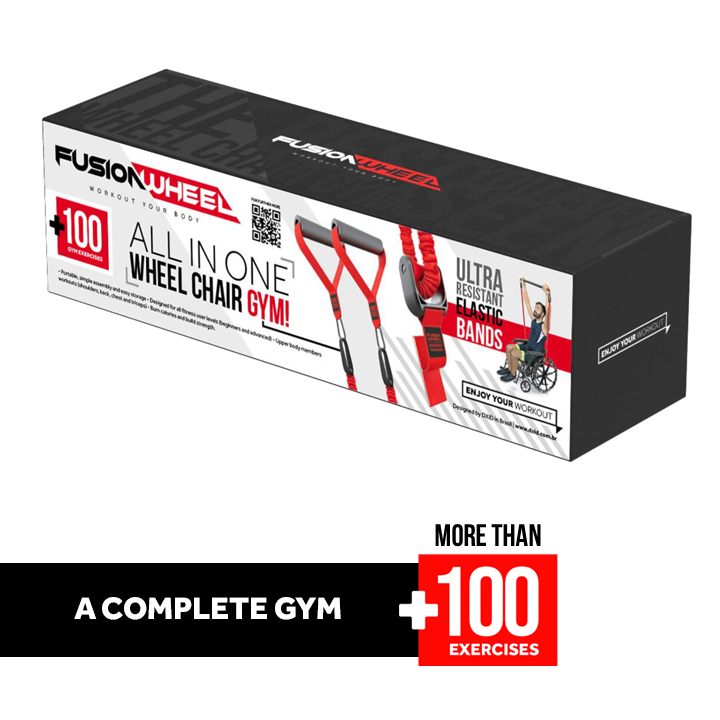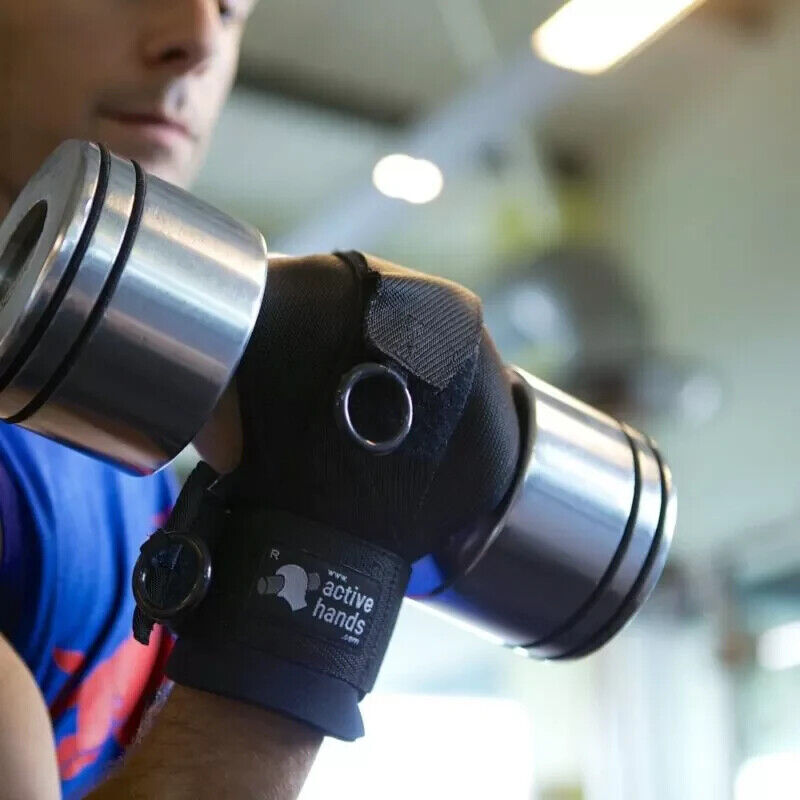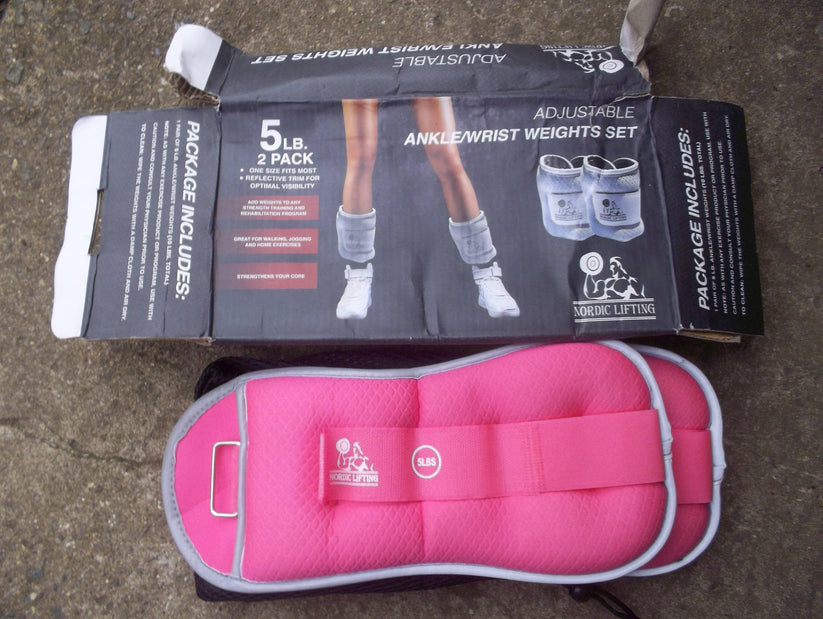
Wheelchair Home Gym: Empowering Fitness for All
Share
Create your Own Wheelchair Gym at Home
Keeping healthy is a goal for everyone, but it isn't always easy to get out to a gym or facility. This is even truer for wheelchair users, particularly in winter where snow and bad weather makes it even harder to travel.
It’s crucial that exercise opportunities are accessible to everyone, so why not create a home wheelchair gym?
The unique challenges faced by disabled people who use wheelchairs demand innovative solutions, so read on!
Understanding the Needs of Wheelchair Users in Fitness
Fitness for wheelchair users involves more than just accessibility; it’s about creating a regimen that is tailored to your specific physical requirements and goals.
This includes understanding limitations, recognising the importance of upper body strength, and ensuring exercises are both safe and effective.
Overcoming Barriers: Adaptive Equipment for Diverse Needs
Adaptive equipment is key in overcoming the physical barriers that wheelchair users often face in fitness. Products like adjustable resistance bands, ergonomically designed handles, and equipment with easy-to-use clasps ensure that exercises are not only effective but also safe and comfortable. Embracing these tools opens up a world of fitness opportunities, making the impossible possible.
Later we will look at free alternatives, but if you want to find out what specialised equipment is available read on:
The Fusion Wheel: Revolutionising Wheelchair Fitness
Enter the Fusion Wheel - an all-in-one portable wheelchair gym designed to break down barriers in fitness for wheelchair users (Fusion Wheel - All in One Portable Wheelchair Gym). This innovative product offers a versatile workout experience, enabling users to engage in a range of exercises that cater specifically to their needs. All in the comfort of your own home, without the worry of finding gyms with suitable access or accessible machines.
To explore the range of exercises available visit "5 wheelchair exercises you can do on the Fusion Wheel all-in-one gym" on our sister shop.

Tailored Exercise Aids: Enhancing Your Workout
For those looking to diversify their workout, the Active Hands Looped and D-Ring Disability Exercise Aids offer a fantastic solution. These aids are designed to assist in a variety of exercises, providing the support needed for an effective workout. Visit our product page to find out more - Active Hands Looped Disability Exercise Aid. The loops can be placed over bars in the gym or used on rowing machines or similar.
Active Hands D-Ring Disability Exercise Aid).

The D-ring on the wrist strap can be used to attach to resistance machines.
General Purpose Gripping Aids for Strength Training
Strength training is a critical aspect of wheelchair fitness, and the General Purpose Gripping Aid is a unique fitness aid for people with poor grip. It allows users to firmly grip weights and other equipment, enhancing their strength training routine (Active Hands General Purpose Gripping Aid).

Incorporating Weights into Your Wheelchair Workout
Adding ankle and wrist weights, like the Nordic Lifting Weights, can significantly enhance a wheelchair workout by providing additional resistance. This not only builds muscle strength but also improves cardiovascular health. Currently we have several sets of weights in our pre-owned section. Such as (Pair of 5 lb Ankle/Wrist Wearable Weights (Green) - Nordic Lifting, Pair of 5lb Ankle/Wrist Wearable Weights (Pink) - Nordic Lifting).

Setting Up Your Home Gym: Space and Equipment Considerations
Creating an accessible home gym requires careful consideration of space and equipment. It’s important to ensure there’s enough room to maneuver a wheelchair and that equipment is within easy reach. Adaptability and flexibility in gym setup can significantly enhance the workout experience.
If you have the space to set aside as a specific area in your home, this can be very motivating and help you get into the right frame of mind to push yourself.
It also helps if you do not have to set your equipmet up each time before starting.
Not everyone has the luxury of space to set aside, so try and use outside public space if the weather is fine.
Setting Up a Wheelchair Gym at Home
Creating a dedicated wheelchair gym space at home offers numerous advantages:
- Accessibility: Designate an area with ample space, ensuring easy wheelchair maneuverability.
- Consistency: Encourage regular workouts with a set spot, promoting a fitness routine.
- Equipment Storage: Keep adaptive equipment organised and readily accessible.
- Safety: Minimize potential obstacles, making workouts safer and more efficient.
- Privacy: Exercise in the comfort of your own space, away from crowded gyms.
If a designated area isn’t possible:
- Portable Equipment: Invest in foldable or easily storable adaptive gym equipment.
- Multi-Use Spaces: Optimize existing areas for workouts, like a cleared living room.
- Routine Adaptation: Flexibility is key; adjust workouts to your available space.
- Community Resources: Explore local accessible spaces such as parks and gardens or possibly use of community centres and spaces.
Remember, the goal is to prioritise accessibility and consistency in your fitness journey.
Exercising in a Wheelchair Without Special Equipment
Exercising at home as a wheelchair user doesn’t always require specialised equipment. Here are some effective ways to maintain fitness using everyday activities and simple exercises:
Cardiovascular Exercise
Boost your heart rate and energy with activities that don’t need special gear. Wheelchair dancing, wheelchair ping pong against a wall, and even pretending to be running by circling your arms are excellent for cardiovascular health. These activities not only increase your heart rate but also add an element of fun and can be quite engaging.
Wheelchair Cardio Exercises
-
Ball Bounce Challenge
For a unique wheelchair cardio workout, grab a medicine ball or a lightweight basketball based on your strength level. Position your wheelchair in front of a sturdy wall. Bounce the ball between yourself and the wall for up to twenty repetitions as a beginner’s goal. To intensify the challenge, test your endurance by counting how many times you can bounce the ball against the wall in just two minutes. Feel the satisfying burn in your arms as you amp up your workout!
-
Aero-Wheel Arms
Maintain an upright seated position in your wheelchair with a straight back. Extend both arms horizontally at shoulder height. Execute slow, wide-range movements while ensuring your arms, hands, and back remain straight. Begin with twenty anti-clockwise repetitions, then switch to clockwise rotations. This engaging exercise promotes cardiovascular health and upper body strength, all while keeping you comfortably seated in your wheelchair.
Strength Training
You can build strength and endurance with exercises like arm raises, side twists, and various stretches. Try exercises such as Aeroplane Arms, Sitting Bicycle Crunches, Knee or Toe Lifts, and Chest Stretches. These movements help in toning muscles and enhancing physical stamina.
Upper Body Exercises
Focusing on the upper body, exercises like shoulder retractions, chest squeezes, and arm rows are particularly beneficial. These exercises target key muscle groups in the upper body, crucial for wheelchair users.
No-Equipment Exercises
Even without gym equipment, you can perform effective exercises like Tricep Dips right in your wheelchair. Additionally, Overhead Shoulder Presses and Side Raises can be done with just the weight of your arms or household items, providing a practical and convenient workout option.
Incorporating these exercises into your routine can significantly improve cardiovascular health, strength, and flexibility. The convenience of these exercises means they can be seamlessly integrated into your daily life, making fitness an accessible goal.
Essential Wheelchair Fitness Tips from Adapt to Perform
From the insightful “Wheelchair Fitness Guidelines” by Ben Clark, here are some essential tips for effective and safe wheelchair workouts:
- Start with Warm-Up: Begin your workout with a good warm-up to prepare your muscles and joints, reducing the risk of injury.
- Focus on Core Strength: Core exercises are crucial as they enhance stability and overall strength, which are vital for wheelchair users.
- Regular Stretching: Incorporate stretching into your routine to maintain flexibility and reduce muscle tension.
- Balanced Routine: Ensure a mix of cardiovascular exercises, strength training, and flexibility workouts for a well-rounded fitness regimen.
- Listen to Your Body: Pay attention to your body’s signals. If a particular exercise causes discomfort, modify or skip it.
Incorporating these guidelines into your daily workout can significantly improve the quality and effectiveness of your exercise routine.
We strongly recommend Ben’s You Tube Channel, he does regular sessions that you can join at home.
An example of one of his older videos “The 30 day fitness plan” is below.
Start Your Home Wheelchair Gym Regime Today!
Wheelchair home gyms are not just about equipment; they’re about empowerment, independence, and the joy of achieving personal fitness goals.
By utilising the innovative products available at Disability Health Shop and following expert wheelie fitness gurus like Ben, you can experience a fulfilling and effective workout right from the comfort of your home. Explore our range of products and embrace the journey towards a healthier, more active lifestyle.
For Further Research on Wheelchair Fitness
Here are some authoritative links from worldwide government and health sources about exercising in a wheelchair:
-
The NHS (National Health Service) provides fitness advice for wheelchair users, including the range of options available for taking cardiovascular exercise in a wheelchair and the importance of raising the heart rate and breaking a sweat through physical activity.
-
WebMD offers examples of exercises for wheelchair users, such as abdominal twists or crunches with resistance bands, variations on rows and pull-downs, and chest presses. It also emphasizes the importance of cardiovascular, strengthening, and flexibility exercises for wheelchair users.
-
The Connecticut government’s official portal shares exercises that can be done in a wheelchair, including range of motion exercises, yoga, resistance training, and weight training. It also highlights the importance of consulting a doctor before starting new exercises and provides specific exercise suggestions.
These sources provide valuable information and guidance for wheelchair users looking to engage in exercise and physical activity.
About the Author: Duncan Edwards
I’ve been a dedicated assistant to my wife, Clare, who is tetraplegic, helping her set up and perform various exercises at home.
This includes working with standing frames, powerplates, and electric stimulated exercises.
I have experience in setting up a specialist exercise bike for both legs and arms.
My knowledge extends to using a walking frame and power assist legs, as well as resistance bands, gripping aids, arm weights, and conducting passive exercises daily.
My journey has given me a deep understanding of the challenges and triumphs in wheelchair home gym activities.
